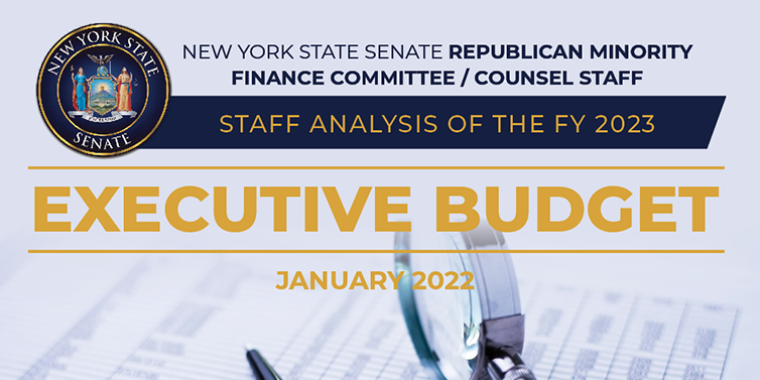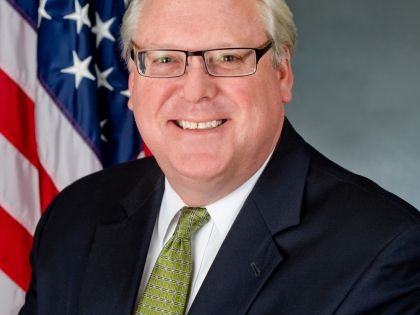
Senator O'Mara's weekly column 'From the Capitol' ~ for the week of March 7, 2022 ~ 'Time to hit the brakes on NY's rush into the energy unknown'
March 7, 2022
-
ISSUE:
- Energy Affordability
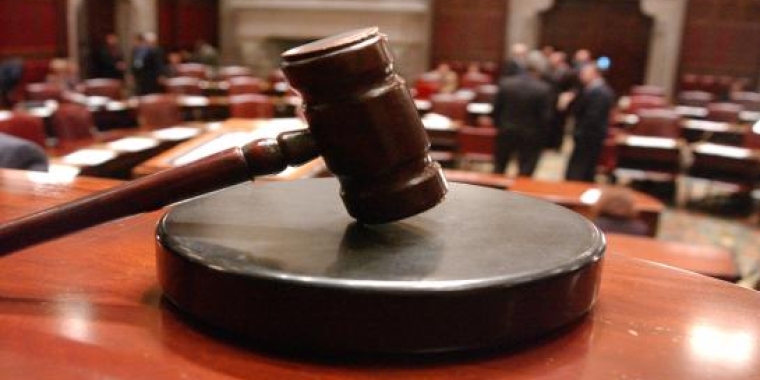
Senator O'Mara offers his weekly perspective on many of the key challenges and issues facing the Legislature, as well as on legislative actions, local initiatives, state programs and policies, and more. Stop back every Monday for Senator O'Mara's latest column...
This week, "Time to hit the brakes on NY's rush into the energy unknown"
New Yorkers currently have the chance to make their voices heard on proposed public policies that, if carried out, will upend the state’s economy and impact everyday lives across the board like very few other government actions ever have before.
When more and more citizens, communities, businesses, families, and workers begin to understand where New York’s energy future is headed in the very near future, I firmly believe it will cause an uproar and a backlash that could help drive a badly needed rethinking and slowing down of this out-of-control process.
Consequently, now is the time to let the powers that be in this state – namely Governor Kathy Hochul and the Democrat majorities in the Senate and Assembly – know that we’re not going to just stand by and let them keep driving people out of their homes, jobs, businesses, and communities.
Now is the time to let them know that they are going too far, too fast pushing a radical, misguided, and irrational leap into the unknown – all for the sake of being able to pound their chests as “leaders” in the progressive, ideologically driven, utopian arena of climate politics.
I’m referring to New York’s ongoing implementation of an aggressive clean energy and climate agenda known as the Climate Leadership and Climate Protection Act (CLCPA). The act was signed into law in 2019 by ex-Governor Andrew Cuomo and continues to be pushed, at breakneck speed, by Governor Hochul and Albany Democrats.
For starters, it seeks 70% renewable electricity statewide by 2030, just eight short years from now. The state’s current electricity source mix is only 8% wind and solar, on a good day.
The law also created the Climate Action Council (CAC) charged with developing the specific blueprint for moving forward to reach goals that, in the view of many, are simply unreachable without causing enormous economic and social upheaval.
The council’s draft scoping plan was released in late December. It is open for public review and comment until April 30, 2022.
It’s critically important to be aware of what’s taking place here.
Among many other provisions, the CAC blueprint calls for:
● No new gas service to existing buildings, beginning in 2024;
● No natural gas within newly constructed buildings, beginning in 2024;
● No new natural gas appliances for home heating, cooking, water heating, clothes drying beginning in 2030; and
● No gasoline-automobile sales by 2035;
● Installing onsite solar or joining a community renewables program by 2040; and
● Installing geothermal heating by 2040.
For some time now, I and many others have made it clear that we are on board with positioning New York State as a leader in renewable energy, and we have been successful! Keep in mind that New York State accounts for just 0.4% of global carbon emissions.
What’s troubling, however, is that Governor Hochul and the Democrat-controlled Legislature are barreling full speed ahead on the remaking of the production and delivery of electricity throughout New York State. The Albany proponents of this Green New Deal estimate the costs to New Yorkers will be nearly $300 billion. I have no doubt that it will far exceed that as Albany cost estimates are notoriously understated.
There has been a glaring lack of appropriate, specific cost-benefit analyses. Ratepayers and the public overall deserve a transparent accounting of what this will cost, where the money will come from (remember that we are talking about billions upon billions of dollars) and what New Yorkers will gain, for starters.
A recent analysis from the Empire Center states, “Governor Hochul’s budget proposal is surprisingly quiet about New York’s most far-reaching and expensive public policy (emphasis mine), the Climate Leadership and Community Protection Act (Climate Act). This act shapes nearly all other state actions by making them subsidiary to reducing carbon emissions statewide.” Anyone who would like to read the Empire Center’s comprehensive and insightful analysis – and I would encourage you to do so – can find it on empirecenter.org.
In short, the path this state is currently taking to reach 70% renewable electricity by 2030 harbors enormous consequences for the state and local economies. That’s just the beginning. The current plan also calls for 100% zero-carbon electricity by 2040.
We need a fuller discussion of what all of these actions potentially mean in the important context of feasibility, affordability, and reliability.
As it stands, those discussions are not taking place. Consequently, we are left to raising these concerns whenever and wherever we can.
I’ll reiterate that New York State is already an absolute leader in this arena, accounting for just 0.4% of global carbon emissions. The CLCPA applies only to New York -- not to neighboring states or, even more importantly, to China, India or Russia, which account for 40% of global emissions.
In other words, even if New York State does reach zero emissions, it will have zero impact on our own climate or the global climate at large.
At a cost of hundreds of billions of dollars to New Yorkers and untold costs to the economy, this will surely further crush the affordability of living for families, drive up the cost of doing business, and further limit economic opportunity.
For example, the overall direction anticipates job losses and negative impacts to school and local government property tax bases. Proposals have been put forth to establish a “Just Fund” that would provide compensation for displaced workers up to three years of wages, and payments to school districts and local governments for lost tax revenues resulting from industries being shuttered. Proposals have been introduced that would increase gasoline costs by an additional 55-cents-per-gallon tax and drive up home heating fuel by 26%.
Millions of homeowners could be facing, in a very near future, having to convert their natural gas, propane, or heating fuel oil furnaces to electric at estimated costs of as much as $40,000 per household.
In just five years, 2027, you will no longer be able to build a new home or building in New York State with a natural gas, propane, or fuel oil furnace or boiler.
We will keep raising that alarm.
In the meantime, as I noted previously, New Yorkers have until April 30, 2022 to submit formal public comments on the proposed energy plan. The Senate Republican Conference is encouraging residents, business owners, local leaders, and others to make their voices heard on these disastrous policies. New Yorkers can use this link to submit public comments: https://climate.ny.gov/Our-Climate-Act/Draft-Scoping-Plan.
###
Share this Article or Press Release
Newsroom
Go to Newsroom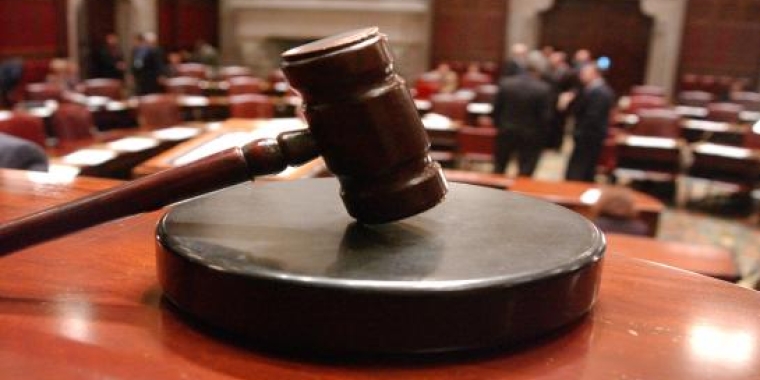
O'Mara blasts Farm Wage Board decision (Read and Watch more here)
January 28, 2022

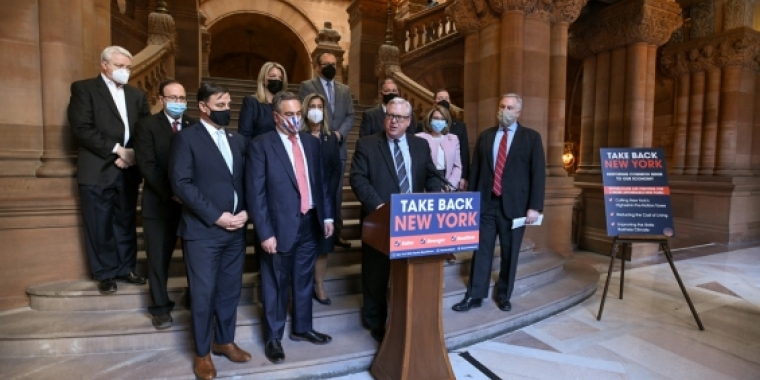
Staff Analysis of the FY 2023 Executive Budget
January 24, 2022
